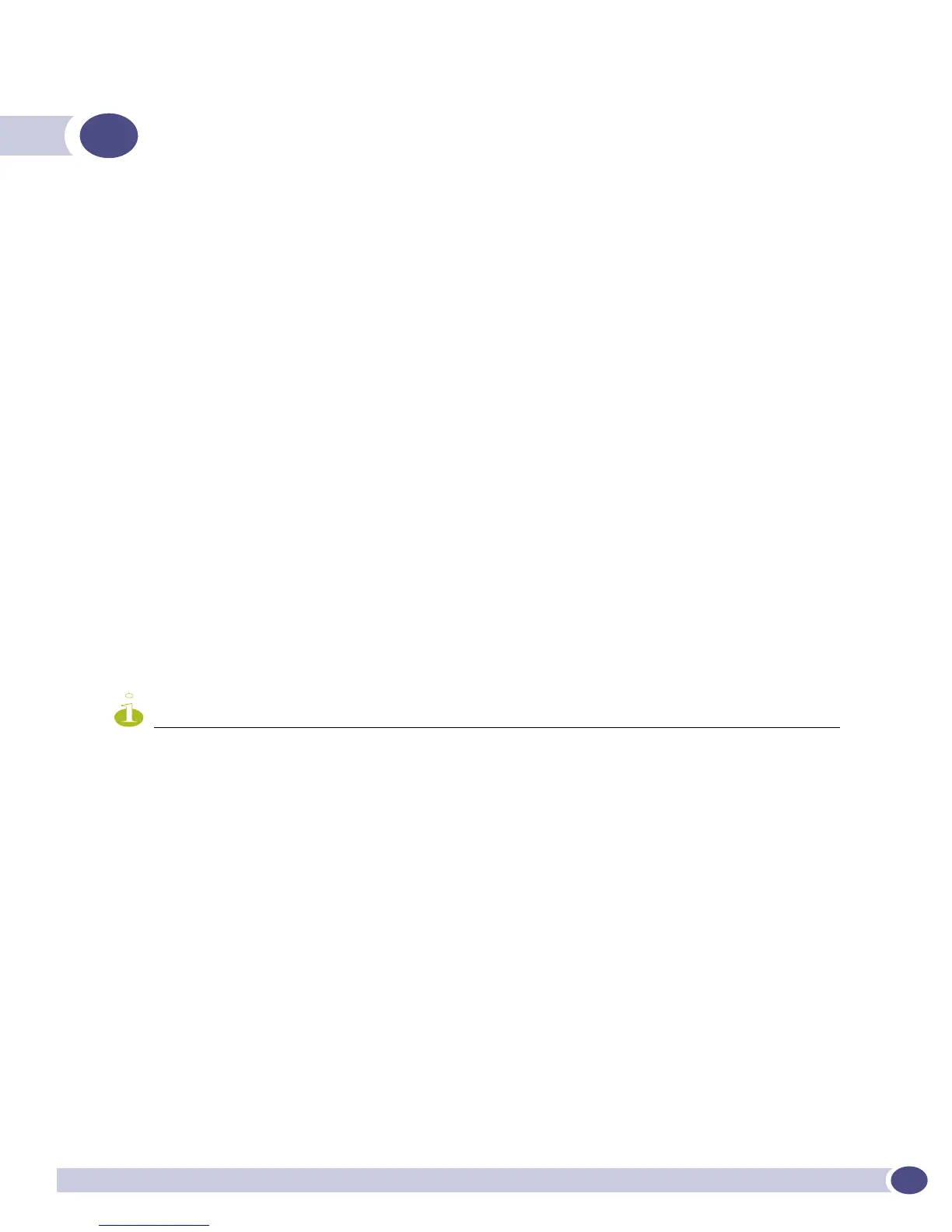ExtremeWare XOS 11.3 Concepts Guide
539
26 RIPng
This chapter describes the following topics:
● Overview on page 539
● Overview of RIPng on page 540
● Route Redistribution on page 541
● RIPng Configuration Example on page 542
This chapter assumes that you are already familiar with IP unicast routing. If not, refer to the following
publications for additional information:
● RFC 2080—RIPng for IPv6
Overview
Routing Information Protocol Next Generation (RIPng) is an interior gateway protocol (IGP) developed
for IPv6 networks. The analogous protocol used in IPv4 networks is called Routing Information Protocol
(RIP). Like RIP, RIPng is a relatively simple protocol for the communication of routing information
among routers. Many concepts and features of RIPng are directly parallel to those same features in RIP.
RIPng is a distance-vector protocol, based on the Bellman-Ford (or distance-vector) algorithm. The
distance-vector algorithm has been in use for many years and is widely deployed and understood. The
other common IGP for IPv6 is OSPFv3, a link-state protocol.
NOTE
RIPng and OSPFv3 can be enabled on a single VLAN.
RIPng is described in this chapter, and OSPFv3 is described in Chapter 28, “OSPFv3” on page 557.
RIPng Versus OSPFv3
The distinction between RIPng and OSPFv3 lies in the fundamental differences between distance-vector
protocols and link-state protocols. Using a distance-vector protocol, each router creates a unique routing
table from summarized information obtained from neighboring routers. Using a link-state protocol,
every router maintains an identical routing table created from information obtained from all routers in
the autonomous system (AS). Each router builds a shortest path tree, using itself as the root. The link-
state protocol ensures that updates sent to neighboring routers are acknowledged by the neighbors,
verifying that all routers have a consistent network map.

